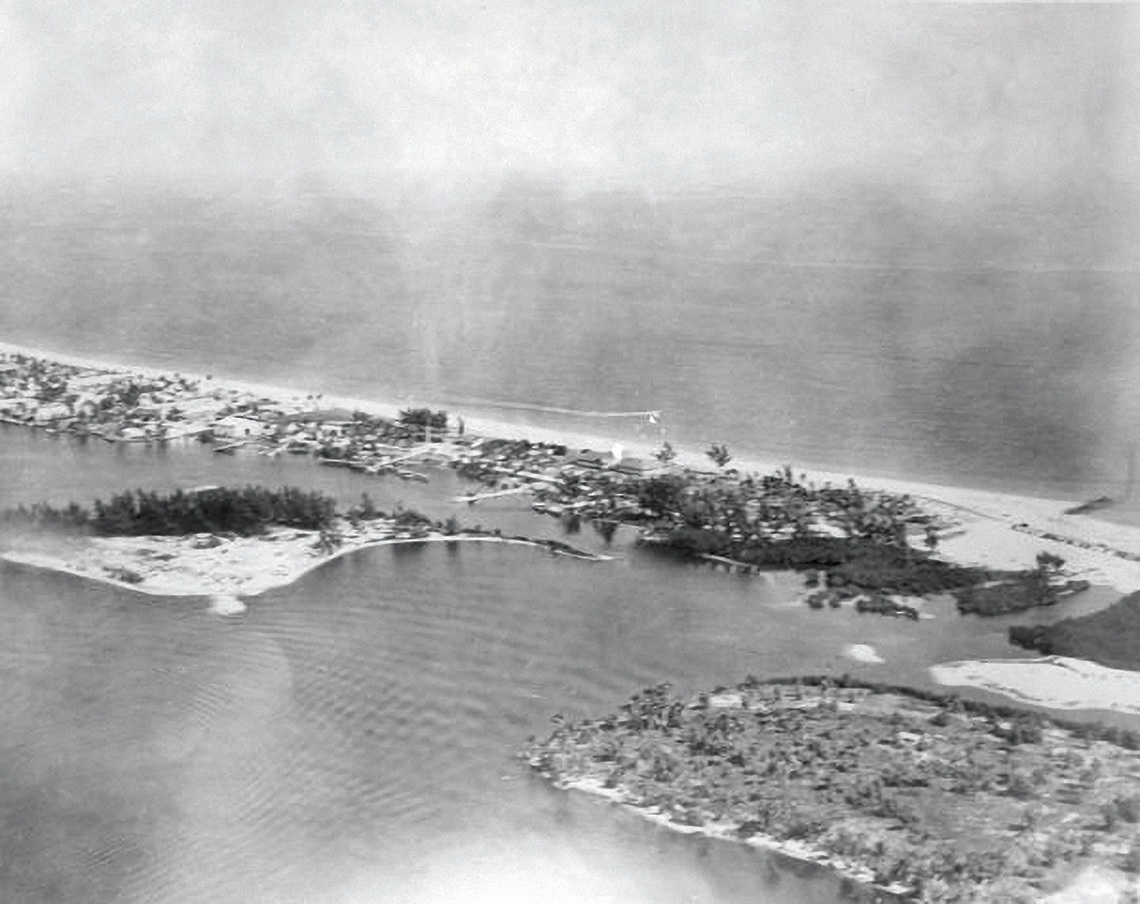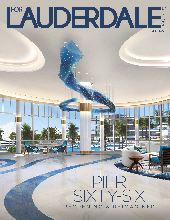
PHOTOGRAPHY: State Archives of Florida, Florida Memory.
No less a writer than Stephen King called John D. MacDonald “the great entertainer of our age, and a mesmerizing storyteller.” Kingsley Amis said he was a better writer than Saul Bellow.
That’s why MacDonald’s celebrated detective – Travis McGee, featured in a series of novels – looms so large in our history. Many a person who has never even been to Fort Lauderdale or a boat show has heard of the Bahia Mar Marina. The marina – today known officially as the Bahia Mar Resort and Yachting Center – is where tropical dreams, slippery characters and adventure were made. Slip F-18. Home of McGee’s houseboat, the Busted Flush, won at a poker game.
Bahia Mar, like Travis McGee, has a few stories to tell.
It was born in times of trouble, as Life Saving Station No. 4, the House of Refuge. At the time, a man named Charlie Pierce described the entire southeast coast as “a howling wilderness.”
Ships from all over wrecked in sudden storms. If the crew and passengers managed to survive the wreck, where would they go?
Eventually an agency called the United States Life Saving Service ordered that five Houses of Refuge be built along the Florida coast. The one at Bahia Mar faced the ocean and was built to withstand hurricanes and tropical storms. The 54-by-25-foot structure would seem to be a mighty lonely place for a keeper and his family. They had rooms on the first floor, with a loft available for surviving sailors. Nearby in the same general location was the third fort named for Maj. William Lauderdale. (The first two were built up the New River.)
By 1926, the fort was long gone. And it was also to be the end of the House of Refuge, destroyed in the devastating hurricane of that year. Or, according to a different account, it was taken over by U.S. Coast Guard Base Six at Bahia Mar.
The Coast Guard faced a new nemesis: rumrunners from the Bahamas during Prohibition. More than a few officers lost their lives in battles on our waterways.
After World War II, a private corporation emerged to build a marina as the Coast Guard base was declared “surplus.” But Bahia Mar Corporation defaulted on payments to the city two years after completion of the marina in 1949. There are several differing accounts of the next parts of the story, but the bottom line is that the city could only completely take over the property by purchasing it from the federal government. There were suits and countersuits by various interested parties, but the city won out thanks to an effort by a couple of familiar names.
City Attorney George English, with the help of his friend U.S. Sen. Claude Pepper, whittled down the purchase price to $600,000 from $1 million. The city still didn’t have enough cash and had to go to private donors.
Col. Joseph Mackey of Mackey Airlines, our city’s first air carrier (later Eastern Airlines), thought the development of Bahia Mar was a landmark move for our city. He said wealthy yachting sportsmen from all over would find the Bahia Mar Marina a marvelous place to dock. Once here, they’d fall in love with the city and buy real estate.
Next time you take a visitor from up north on the Jungle Queen or its cruising cousins, notice where you are. As you pass by a 300-slip marina with magnificent yachts – and then, as you run the gamut of multimillion-dollar homes – you might ponder Mackey’s statement.
Or you just may think of how far we’ve come since that barren strip of beach along the marina, and also of a brave refuge keeper or two, who sat alone watching howling storms – and perhaps wondering just what this place would become.












2 comments
My name is Hunter. I am in 10th grade. I am searching for the date of an article about THe Bahia Mar when it was House of Refuge for shipwrecked sailors. The article, was printed in Sun Sentinel or Fort Lauderdale news called “The Way We Were” written by Stuart B. McIver about the hanging of James Horace Alderman for my Florida History final, with photographs by Ft. Lauderdale Historical Society & Staff photographer Tim Rivers. I have the actual news paper article that was cut out of the paper by my great, great grandmother sometime in the 50s, or 60s, maybe as late as early 1970s, and given to me by my great grandmother in 2017. The date of the paper was not included in the way the article was cut out. Can you help?
Hi, Hunter. A good place to start is the Broward County Library.
https://www.broward.org/Library/Research/SpecialCollections/Pages/historicalarchives.aspx
They have a great collection of historical photos as well.